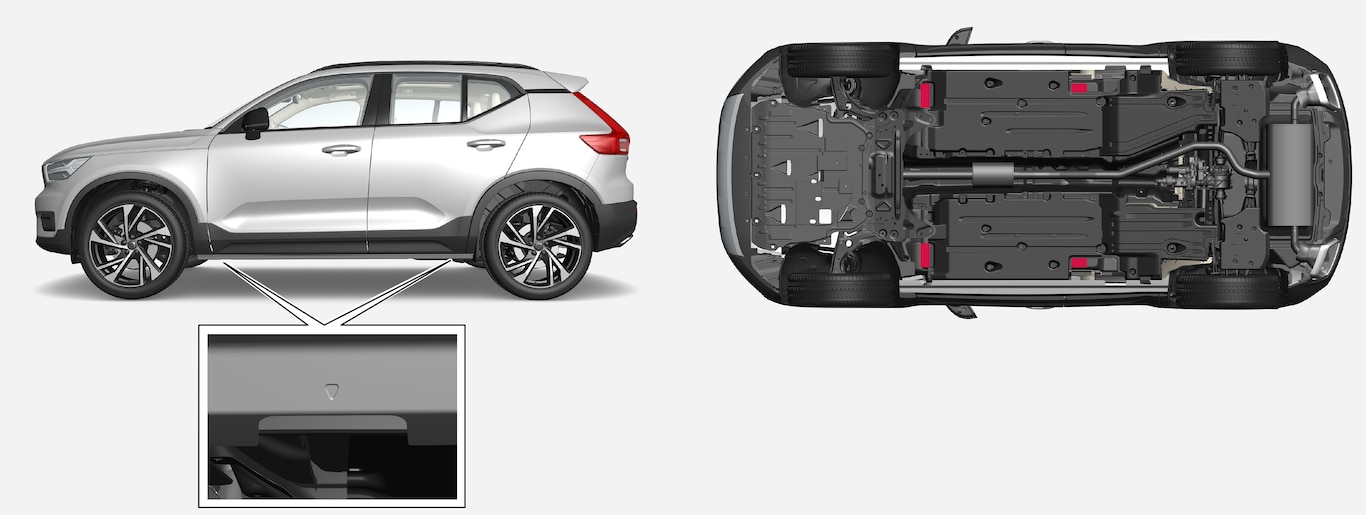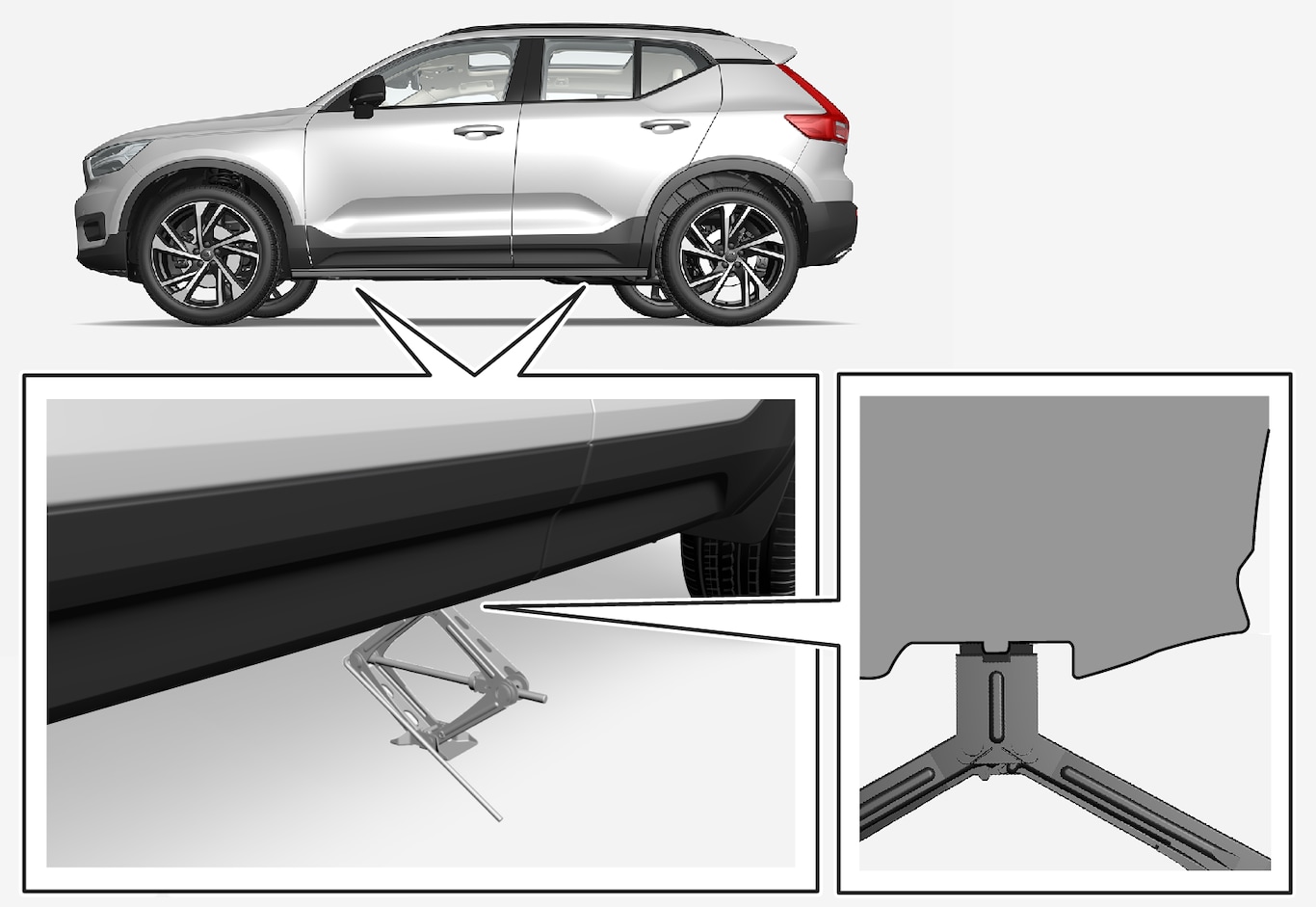
Note
Volvo recommends only using the jack intended for your specific vehicle model. If a jack other than that recommended by Volvo is used, follow the instructions included with the equipment.
The vehicle's ordinary jack is only intended to be used in temporary situations for short periods of time, such as when changing wheels in the event of a flat tire. If the vehicle needs to be lifted more frequently, or for a longer period of time than for a wheel change, a garage jack or hoist is recommended. Always follow the instructions for use provided with the equipment.
Warning
- Apply the parking brake and put the gear selector in the Park (P) position.
- Block the wheels standing on the ground, use rigid wooden blocks or large stones.
- Check that the jack is not damaged, that the threads are properly lubricated and that it is free from dirt.
- Be sure the jack is on a firm, level, non-slippery surface and that it is upright and not leaning.
- The jack must correctly engage in the jack attachment.
- No objects should be placed between the base of jack and the ground, or between the jack and the attachment bar on the vehicle.
- Never let anyone remain in the vehicle when it is raised on a jack.
- If a tire must be changed near passing traffic, make sure all passengers move to a safe location.
- Use a jack intended for the vehicle when changing a tire. For any other job, use stands to support the vehicle.
- Never crawl under the vehicle and never stretch any part of your body under the vehicle when it is raised using a jack.
Warning
When not in use, the jack* should be kept in its storage compartment under the cargo compartment floor.
Turn on the vehicle's hazard warning flashers if e.g. a wheel change must be performed in an area with traffic.
Position the jack or garage lift arms at the designated points under the vehicle. Arrows along the lower edges of the sides of the vehicle indicate the location of the jack attachment points/lifting points. There are two jack attachment points on each side of the vehicle. There is a groove for the jack at each attachment point.
